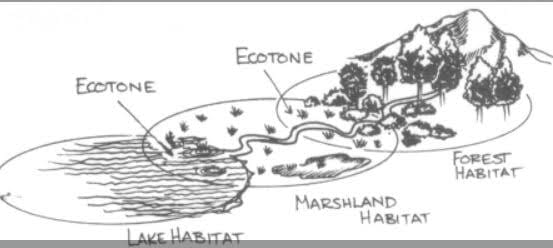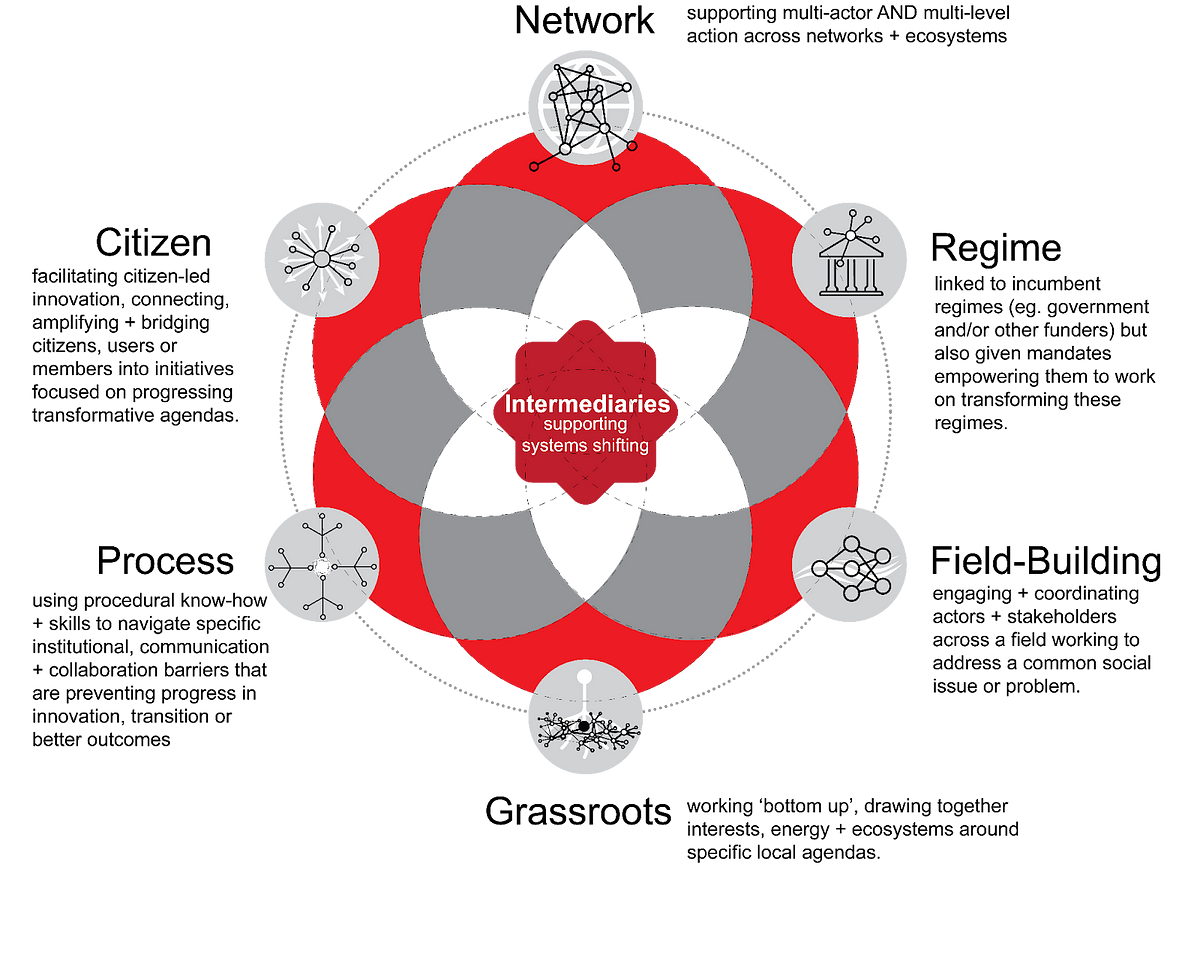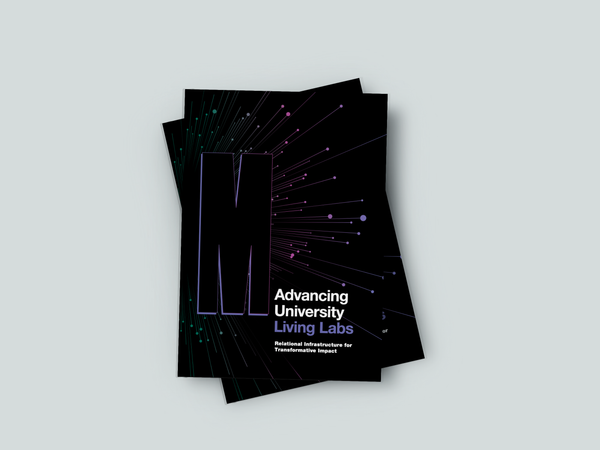Provocation: Exploring Ecotone Organising
Ecotone organising offers a promising approach for fostering collective action on complex challenges. By creating spaces that are independent of existing organizational structures, we can cultivate hybrid cultures, shared capabilities, and flexible governance.

Lately I've been thinking a lot about the possibilities and limitations of the traditional structures we use to get things done when it comes to collective action challenges like climate transitions.
We all know the familiar challenges of when a challenge space is too tightly held or owned by a single organisation or project team. The space for genuine collaboration becomes smaller, less strategic. A project team has autonomy, but also a financial end point which results in short term pragmatism at the expense of longer term investment in what's really needed.
Meanwhile we've seen a rise in the concepts of Mission-oriented Innovation, Challenge-led Approaches, and Portfolio-based interventions. Yet there's often the question of who "holds" these vehicles for collective action? How are they governed? What legal structures do they use? Without exploring new models of organising, it is easy to 'snap back' to traditional models, and to the dominant culutres which often snuff out the delicate sparks of collective action.
This has led me to talking to a few friends about models for organising differently. As always, my first instinct is to consider what 3.8 billion years of R&D has to say on this matter.

Hello Ecotones
I became familiar with the term 'Ecotone' (from ecology) and this got me pondering whether we could adopt this concept and apply it to an organising model, to imagine a way of organising which better suits these "in between" spaces needed for effective collective action.

Think of Ecotones as the transitional space between two ecosystems - such as below the high tide mark on a beach, the tidepools and slope down to where a seagrass meadow begins. Or the reeds on the edge of a wetland and a forest.
Sometimes these areas will be very narrow, and will be home to species which live in both ecosystems, but will also likely have highly specific species of animals, insects, plants or fungi of its own.
The thing about Ecotones is that they are one of the most vibrant spaces on earth - rich in biodiversity and innovative species which are dealing with constant change and flux. They also act as a buffer against extremes - such as floods, strong waves, heat or otherwise.
Ecotones act as buffer regions when catastrophic conditions strike and protect the adjacent ecosystem from any prospective dangers.
For instance, if a tsunami hits a coast, it’s usually the mangrove vegetation that acts as the shock absorbers. It prevents a massive amount of danger from infiltrating the terrestrial region
Ecotones act as biodiversity hotspots between two ecosystems. As such, this area is of high environmental and scientific importance.
Because this region borders two well-defined ecosystems, it promotes gene flow from one community to another, thereby giving rise to interesting variations. As such, ecotones hold evolutionary significance.
- Ecotones by InsightsIAS
Why pay attention to them? Well they feel like an important allegory or analogy perhaps, for the kinds of spaces that we strive to create to foster collective action - such as social & living labs, collective imact initiatives, challenge-led collaborations.
Etymologically speaking, we're blending "ecology" (relationship between species and their environment) and "tone" (tension). I think that neatly describes the sense of flux and flow inherent in this idea.

Ecotone Organising - what might it be?
When I think about Ecotone Organising, I think about Challenges, Structures, Capabilities and Processes & Protocols, and how these come together to enable collective action which lives between organisations, people and networks.
Ecotone organising could be about creating the space which is explicitly not owned by any single organisation - thus creating a new hybrid culture, offering capabilities which hold the collaborative co-creative processes necessary for collective action, and operating with a structure which can enable the maximum amount of co-investment and generative outputs possible.
Similar (but Different) Ideas
Nick Scott & Christian Bason talked about this last year in terms of 'Third Space' organisations, with an emphasis on the orchestration across networks, in particular giving the example of New Brunswick Social Policy Research Network (NBSPRN).
Likewise the idea of Constellation Governance, put forward by Tonya Surman through Centre for Social Innovation, "is a complexity-inspired framework designed to ‘hold’ collaborations within dynamic systems. Balancing chaos and order, energy and structure, the governance model supports multi-organization partnerships and networks within complex systems". This highlights the qualities and structures needed to create an effective container for this kind of work.
How I envisage Ecotone organising is a very active, engaged position to a challenge, embedded so to speak - so I think that's aligned but perhaps slightly different to traditional research networks.
I can't think of many examples of this way of organising, but the closest I can think of is Regen Melbourne, which aims to work with, in and across systems to foster collective action.
Existing models of organising which are closest to this Ecotone organising:
- Social & Living Labs
- Challenge / Mission orchestrators
- Collective Impact Backbone organisations
- Task force
- Sustained Tiger Teams and/or Agile Sprint Teams
- Some DAO
- Impact Networks
- Some Consortia & Coalitions
- There's a useful outline of a research project on organising models here: The Shape of Organising Models
- This article by Bill Bannear is also useful context: Consortia & Coalitions - Embarking on collaborative journeys

Example: Applying an Ecotone organising approach
Let's take an example to work through what this might look like:
Challenge: Fostering climate action in a regional town to support mitigation and adaptation, whilst stimulating local economic development and social innovation.
Structures & Resources: A 'living lab' which is established and co-invested in by government grants, philanthropic funding, council funding, and also harnesses in-kind contributions from community members and local businesses. Potentially this could be established through an endowment sum.
Legally, this might be auspiced by a not-for-profit charity structure, a cooperative or something else. It may require establishing new structures for projects or spinouts that occur in the lab (for example a co-operative energy retailer). Potentially has MOU, partnership agreements, or seed funding in place to support emerging projects and initiatives.
The goal is to create a stable financial state which enables continuity and coherence, on top of which the lab can enable 'surge capacity' through additional project funding.
Capabilities: a core team which covers a range of capabilities, including:
- raising and managing finances
- team hiring, development and admin
- developing and managing partnerships and stakeholders
- communications and storytelling
- social process design, facilitation and coaching
- collective intelligence, knowledge management, activation & translation
- portfolio development and coordination
- monitoring, evaluation & learning
- supporting and sustaining impact pathways
- cohesive wellbeing support
- domain understanding and trans-disciplinary integration
Also participants, provocateurs, coaches & mentors who can provide expert knowledge, domain expertise, systemic insights, connections and networks, sensemaking, and more.
Processes / Protocols: the core processes and protocols which sustain collective action in this model would include developing relationships, forming partnerships, facilitating visioning, co-creation and identification of ideas and experiments, supporting coherence and logic for prioritisation, impact coaching, and supporting reflection and adaptation.
Value: there is an opportunity for this lab to create multiple forms of value, which might include:
- Coherent understanding of 'current state' of the town - a common asset for everyone to start from, such as a historical timeline of key events, demographic information, a community asset map, mapping of aligned or opposing initiatives currently active, summary of current climate emissions, projected climate risks and reduction measures.
- Relational convening power - the ability to bring together key players from across civil society, local and state government, business, academia, local / regional media, as well as local residents. Ideally, with trust and track record of hosting meaningful dialogue in non-partisan ways.
- Challenge framing, angles and alignment - the expertise to bring together existing evidence, lived experience, tailored analysis and current stakeholders to unpack the transition challenge and find some angles which there is support for exploring, to support the desired transition.
- Generative discussion, co-creation and prototyping - convening and hosting creative processes to address the angles, support groups to work on the development of the ideas, and nurture the promising ones to initial prototyping stage.
- Coach & support initiaives through to embedded change - working with teams and individuals to support the most promising initiatives (and let people end or adapt less promising ideas) toward their implementation and embedding into a 'new normal'.
- Connected action and learning - avoiding the risk of further siloed responses by ensuring initiatives developed through the lab are connected to one another, as well as connected into the broader ecosystem of work happening across the region and, as appropriate, beyond. Reflective practice is encouraged to support the surfacing of learnings within and amongst the lab stakeholders, and shared with the broader system.
- Knowledge development and documentation - in the lab, there is dedicated capacity to support the capturing and documentation of learnings and knowledge, which is then stored and mobilised for future needs.
- Evaluation and reporting - measurement and evaluation of multiple layers - the outcomes of the process on participants, the outcomes of initiatives developed through the lab, and the systems-level outcomes and impact of the 'portfolio' of lab activity.
- Capability & capacity building - not only are initiatives developed which aim to support the transition in the town, but the process builds new capabilities, capacity and culture within the participants - opening up new possibilities for future work and initiative development. The rolling ball of social and economic development.
- Good news stories & new narratives - we know that change takes time and that to maintain momentum, good will, and sustained energy - we need signals of progress. The lab dedicates capacity to ensuring good news stories are captured and shared (data, anecdotes and human stories), and over time can support the shaping and supporting of new narratives - such as about the progress of transition in the town.

What makes the Ecotone approach different?
Here I aim to explore how this approach is not the same as other notions which are closely aligned.

Sector Neutral
In theory, Ecotone organising works to convene actors across all sectors, and aims not to be led or "owned" by one of them specifically.
Ecotone organising is in theory best captured by the notion of a Systems Intermediary or Orchestrator. Griffith's Centre for Systems Innovation writes about this here:

The 'Orchestrator' or 'Intermediary' are often seen as roles which are played by a specific actor or organisation from a specific sector - but what I am proposing is that this way of organising does not belong to these because then the team's autonomy will be hemmed in by the strategy, risk tolerance, theory of change and organisational mandates of those organisations.

Highly specialist skills & capability development
The cocktail of specialist skills needed to create these containers, create value, and sustain them over time can be hard to come by. The goal of ecotone organising would be to identify and cultivate these specialist skillsets, nurture them over time, and ideally maintain a low level of churn in the core team. The relational infrastructure built through ecotone organising is of very high importance to enable high levels of collaborative function in the core team, the participant groups, into the community of stakeholders as well as the connectedness to place.
Ecotone organising seeks to build these skillsets and culture across all participants, becoming an impact multiplier.

Systems Sensemaking
Working at the overlapping edges of systems enables ecotone organising a unique perspective and degree of systems sight - the ability to identify the patterns which stabilise or keep a system stuck. This can support identification and prioritisation of areas to address for any initiatives seeking improvement, transition or transformation.
With this role comes the responsibility to help others see the dynamics and patterns of these systems through visualisation, stories, and experiential opportunities, as well as bringing this into the generative processes. This engaged nature of ecotone organising is positioned differently to orchestration / intermediary roles which tend to be about convening and facilitating as a neutral party.

Beyond singular impact pathways
Sector-led approaches have a tendency to view the initiatives developed through their processes through their own theory of change (for example, business/market-based accelerator programs will invariably coach initiatives that their path to success is a business model and a market-based solution, even if the initiative is actually better suited to a policy, campaign or arts-based response).
Instead, an ecotone approach aims to coach promising initiatives to develop their own direction, and supports them to connect with appropriate people, organisations, support programs or networks which can help them realise their impact.
Potential Challenges
With a little foresight we can see where this way of working might hit some snags.
Pigeon-holing or Capture - invariably we need some form an organisational structure to hold resources and use them for ecotone organising approaches, and thus there is a risk the initiative can get painted into a box as a business-led, community-led, government-led, university-led initiative. Likewise if they're too embedded in these organisations, their mandate might be curtailed or altered by a change in strategy or leadership.
Counter-BAU - these ways of organising are still not mainstream, and thus people are still understanding the value of "intermediary" type organisations and the value they create. This could make them vulnerable, easy to exclude, or hard to fund if they're not well established and integrated.
Sustaining a Core Team & succession planning - as I mentioned above, keeping a talented core team together over time, keeping them engaged and preventing burn out can be a difficulty. Likewise nurturing and developing the next generation of ecotone practitioners may be a significant investment, as there isn't a clear pathway to develop this unique blend of skills. Partnering with an educational institution (such as a University Living Lab) might be one way to develop a field of future practitioners.
Conclusion
For me, Ecotone organising offers a promising approach for fostering collective action in complex challenges like climate transitions. By creating spaces that are independent of existing organizational structures, we can cultivate hybrid cultures, shared capabilities, and flexible governance.
This approach is inspired by some incredible ecological ecotones on Wurundjeri Country where I live, and the next step for me is to spend more time observing interactions and patterns in a variety of different ecotones - learning from the wisdom of Country.
I'm keen to keep exploring what ecotone organising would look like, in the hope we can unlock new possibilities for collaboration, collective action and realise the scale of ambition we need in these times.
Let's continue the conversation?
I'd be interested to hear your thoughts on this concept. Do you have any experiences or ideas related to ecotone organizing that you'd like to share? Feel free to leave a comment below or connect with me on LinkedIn.






